BOOKS

Dying, Bereavement, and Healing Arts
– Gillie Bolton, 2010
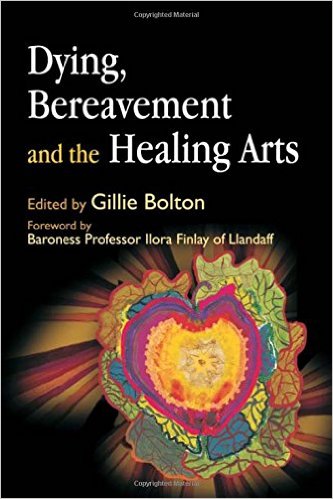 Dying, Bereavement and the Healing Arts describes a range of successful programmes pioneered by artists, writers, nurses, musicians, therapists, social workers, and chaplains in palliative care settings. These range from simple painting and writing activities to organized communal activities like writing and performing a play. The arts are shown to offer a means to reflect on memories, hopes, fears and anxieties, and gently explore the emotional, spiritual, and psychological issues which can aid a fuller understanding of oneself and one’s condition. The arts also serve as a way to communicate difficult and complex feelings to professionals or family members not possible in everyday conversation. Dying, Bereavement and the Healing Arts offers valuable insights and inspiration for any practitioner working in a palliative care setting.
Dying, Bereavement and the Healing Arts describes a range of successful programmes pioneered by artists, writers, nurses, musicians, therapists, social workers, and chaplains in palliative care settings. These range from simple painting and writing activities to organized communal activities like writing and performing a play. The arts are shown to offer a means to reflect on memories, hopes, fears and anxieties, and gently explore the emotional, spiritual, and psychological issues which can aid a fuller understanding of oneself and one’s condition. The arts also serve as a way to communicate difficult and complex feelings to professionals or family members not possible in everyday conversation. Dying, Bereavement and the Healing Arts offers valuable insights and inspiration for any practitioner working in a palliative care setting.
Saved by a Poem: The Transformative Power of Words
– Kim Rosen, 2009
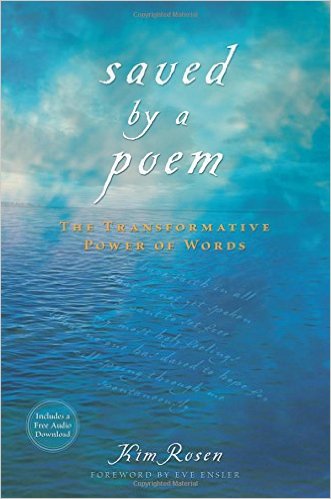 Can someone really be saved by a poem? In Kim Rosen’s book, the answer is a resounding “Yes!” Poetry, the most ancient form of prayer, is a necessary medicine for our times: a companion through difficulty; a guide when we are lost; a salve when we are wounded; and a conduit to an inner source of joy, freedom, and insight.
Can someone really be saved by a poem? In Kim Rosen’s book, the answer is a resounding “Yes!” Poetry, the most ancient form of prayer, is a necessary medicine for our times: a companion through difficulty; a guide when we are lost; a salve when we are wounded; and a conduit to an inner source of joy, freedom, and insight.
Whether you are a lover of poetry or have yet to discover its power, Rosen offers a new way to experience a poem. She encourages you to feel the poem as you might an affirmation or sacred text, which can align every level of your being.
In an uncertain world, Saved by a Poem is an emphatic call to cultivate the ever-renewable resources of the heart. Through poetry, the unspeakable can be spoken, the unendurable endured, and the miraculous shared. Weaving teaching, story, verse, and memoir, Rosen guides you to find a poem that speaks to you so you can take it into your life and become a voice for its wisdom in the world.
Using the Creative Therapies to Cope with Grief and Loss
– Stephanie L. Brooke, Dorothy A. Miraglia, 2015
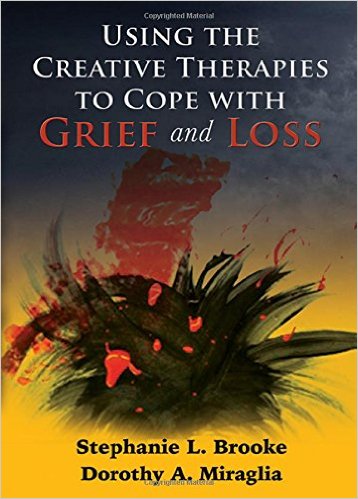 Using the Creative Therapies to Cope with Grief and Loss is a comprehensive and exciting work that illustrates the use of art, play, music, dance/movement, drama, and animals as creative approaches for helping clients cope with grief and loss issues. The editors’ primary purpose is to present an array of creative treatment approaches, which cover the broad spectrum of grief, more than just loss through death. Well renowned, well-credentialed, and professional creative arts therapists in the areas of art, play, music, dance/movement, drama, and animal-assisted therapies have contributed to this work. In addition, some of the chapters are complimented with photographs of client work in these areas. The reader is provided with a snapshot of how these various creative arts therapies are used to treat children and adults diagnosed struggling with loss or complicated grief. This informative book will be of special interest to educators, students, therapists as well as people working with families and children coping with loss.
Using the Creative Therapies to Cope with Grief and Loss is a comprehensive and exciting work that illustrates the use of art, play, music, dance/movement, drama, and animals as creative approaches for helping clients cope with grief and loss issues. The editors’ primary purpose is to present an array of creative treatment approaches, which cover the broad spectrum of grief, more than just loss through death. Well renowned, well-credentialed, and professional creative arts therapists in the areas of art, play, music, dance/movement, drama, and animal-assisted therapies have contributed to this work. In addition, some of the chapters are complimented with photographs of client work in these areas. The reader is provided with a snapshot of how these various creative arts therapies are used to treat children and adults diagnosed struggling with loss or complicated grief. This informative book will be of special interest to educators, students, therapists as well as people working with families and children coping with loss.
Art as Medicine: Creating a Therapy of the Imagination
–Shaun McNiff, 1992
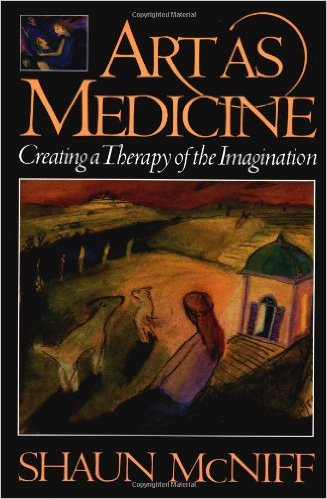 “Whenever illness is associated with loss of soul,” writes Shaun McNiff, “the arts emerge spontaneously as remedies, soul medicine.” The medicine of the artist, like that of the shaman, arises from his or her relationship to “familiars”—the themes, methods, and materials that interact with the artist through the creative process. Art As Medicine demonstrates how the imagination heals and renews itself through this natural process. The author describes his pioneering methods of art therapy—including interpretation through performance and storytelling, creative collaboration, and dialoguing with images—and the ways in which they can revitalize both psychotherapy and art itself.
“Whenever illness is associated with loss of soul,” writes Shaun McNiff, “the arts emerge spontaneously as remedies, soul medicine.” The medicine of the artist, like that of the shaman, arises from his or her relationship to “familiars”—the themes, methods, and materials that interact with the artist through the creative process. Art As Medicine demonstrates how the imagination heals and renews itself through this natural process. The author describes his pioneering methods of art therapy—including interpretation through performance and storytelling, creative collaboration, and dialoguing with images—and the ways in which they can revitalize both psychotherapy and art itself.
Art Heals: How Creativity Cures the Soul
– Shaun McNiff, 2004
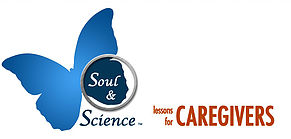
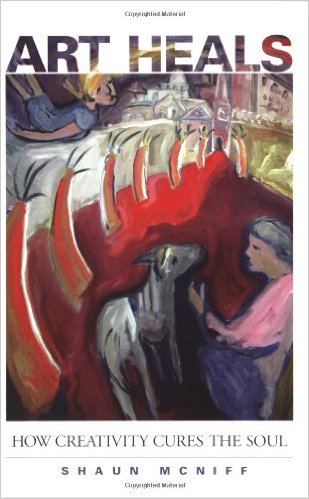 The field of art therapy is discovering that artistic expression can be a powerful means of personal transformation and emotional and spiritual healing. In this book, Shaun McNiff, a leader in expressive arts therapy for more than three decades, reflects on a wide spectrum of activities aimed at reviving art’s traditional healing function. In chapters ranging from “Liberating Creativity” and “The Practice of Creativity in the Workplace” to “From Shamanism to Art Therapy,” he illuminates some of the most progressive views in the rapidly expanding field of art therapy:
The field of art therapy is discovering that artistic expression can be a powerful means of personal transformation and emotional and spiritual healing. In this book, Shaun McNiff, a leader in expressive arts therapy for more than three decades, reflects on a wide spectrum of activities aimed at reviving art’s traditional healing function. In chapters ranging from “Liberating Creativity” and “The Practice of Creativity in the Workplace” to “From Shamanism to Art Therapy,” he illuminates some of the most progressive views in the rapidly expanding field of art therapy: